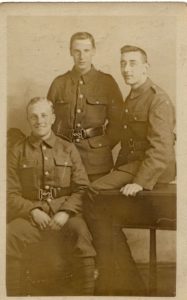
The number of Hull’s war wounded actually increased over time, as war injuries worsened and other war related wounds were reported. The Ministry of Pensions, for example, records 20,000 war wounded in Hull, in 1924.
This ‘Kingston Upon Hull Memorial’, data base, ensures that all Hull casualties, are remembered by name, rank, regiment, service, age, or street. Casualties are also cross referenced by postcode, and date of death, to key dates in the war, to reveal how events impacted casualties on different areas of Hull, over time. This comprehensive analysis reveals that:
- 4,827 men, with a direct link to Hull, are recorded killed during the First World War, by the Commonwealth War Graves Commission. 3,807 of these men, served in the army, 986, in the Royal Navy; 569, in the Merchant Navy and 34, in the Royal Air Force.
- 6,569 men who enlisted in Hull, and died during WW1. Of these 195, died in 1914; 816, in 1915; 1,802, in 1916; 1,781, in 1917; 1,971, in 1918 & 6, in 1919.
- 4,330 of these 6,569 casualties (or 66%) enlisting in Hull, were actually born in Hull. Where known, 250 men enlisted in Hull from other parts of Yorkshire, as did, 208 men from Lincolnshire, 86 Londoners, 84 men from other parts of England, 21 men from Scotland, 24 from Wales, 17 from Ireland and 30 men from Australia, Canada and New Zealand. These had a Hull connection, either by birth, work or residency (Soldiers Died in 1914-1918 figures).
- 1,555 sailors from Hull died in WW1 (CWGC figures & Maritime Great War Index).
- 1,117 men died from surrounding East Riding towns and villages It includes 600 men from Beverley, Hessle (104 men), Cottingham (105); Hedon (22); Willerby (14), Sutton, (36); North Ferriby (24) and Hedon (22) and other places, with strong links to Hull.
- 15 Hull servicemen, on average, were killed and wounded every day during the First World War
- Some days were worse than others – 47 Hull Royal Navy sailors died at the Battle of Jutland on 31st May 1916.
- 115 Hull men, died on the 1st July 1916, the first day of the Battle of the Somme
- 241 Hull men died on the 13th November 1916, (the Hull Pals attacked Serre, on the Somme)
- 131 Hull men died on the 3rd May 1917,(the Hull Pals attacked Oppy Wood, near Arras)
- 77 Hull men died on 9th April 1917, serving with the 1st East Yorkshire Battalion, on the first day of the Arras offensive
- 157 Hull men, died between the 21st and 23rd March 1918, during the Great German Offensive
- Over one hundred Hull families lost two or more from the same family and at least ten Hull families lost three sons. Four Hull families are known to have lost four sons. – https://ww1hull.com/category/our-losses/brothers-that-died
- 26 streets, in Hull, lost 50 men or more, during the WW1. Some of these, were Bean Street (122 men); Waterloo Street (99); Spyvee Street (79); Nornabell Street (75); Gillett Street (72); Walker Street (69), Wassand Street (69); Walcott Street (68); Barnsley Street (67); Courtney Street (65); Buckingham Street (63); St. Paul’s Street (59); Sculcoates Lane (57); New George Street (57); and Clarendon Street (54). Hundreds more Hull men died from surrounding streets along Hessle Road, Newland Avenue, Holderness Road, Beverley Road, Anlaby Road and in the industrial areas of Witham and Wincolmlee. Local Newspapers reported on the hundreds of street shrines, erected in Hull (more so, than any other UK city). Some of these street shrines remain today and provide a valuable record of those who served and died from each Hull street. – https://ww1hull.com/hull-street-shrines
- Hull’s casualties were mainly Privates, Non Commissioned Officers or from other lower ranks. There are less than 250 Officer recorded deaths in Hull
- The first Hull casualty, was Thomas Pearson Taylor, accidentally killed on 21/08/1914. The first Hull man to die in action, was Frederick Mileham, killed on 24/08/1914
- The first reported Hull death, was Private, Robert W. Parker, of the 1st West Yorkshire Regiment, from Adelaide Street, Hull (Hull Daily Mail, 19 Nov 1914)
- One of the last casualties, was William “Billie” Glew, of the Royal Air Force, from Bridge Gate, Howden (Hull Daily Mail 18 Jan 1919). Commissioned on 6th August 1918, he was 18 years and ten months old, when he died, on 6th November 1918 (Hull Daily Mail 18 Jan 1919)
- The oldest war Hull casualties were two sailors, both aged 67. The Youngest were three boys, each aged 14 and killed on active service
- The majority of Hull’s losses were young men, with 67% dying, aged 30 years or younger. This includes 1,249 Hull Teenagers, of which, 95 died, aged Seventeen, 45, were aged Sixteen, and 9 were aged only Fifteen years old
- Hull’s casualties accelerated as the war progressed, with most Hull men killed in 1918, the final year of the war. The 329 Hull men killed in 1914, increased to 1,266, lost in 1915, 2,450 in 1916, 2,593 in 1917 and 2,711 deaths in 1918. This was consistent with the rest of the UK. Britain lost more men in 1918, the year of victory, than in any other year of the war, and more British soldiers were killed in 1918, than the entire Second World War
- Another 298 Hull servicemen died in 1919, being killed in the civil wars of Russia, Iraq and Ireland, clearing battlefields of dangerous munitions, succumbing to war wounds or disease, drowned at sea due to unexploded mines.
- As war injuries worsened, so did the death toll. Hull’s War pension records show that 107 former Hull servicemen died in 1920, 105 in 1921, 39 in 1922, 35 in 1923 and another 29 in 1924. As war pensions were difficult to obtain, and not everyone applied, the losses could be much higher
- Hull men fought from the very start of the war, until its end. They served in the all major battles – the Marne, Gallipoli, Jutland, the Somme, Arras and Passchendaele They fought in the Middle East, East Africa, the Western Front, Salonika and Russia, on land, sea and air
- Hull men served across all armed forces worldwide and are buried at 961 cemeteries across the globe. 1,572 are buried in Hull Cemeteries. Those with WW1 military graves include 456 in Hull Western cemetery; 264 at Hull Hedon Road cemetery, 147 at Hull Northern cemetery and over 700 men who died “out of uniform”.
- Many have no known grave. The National War Memorials to the missing, at Thiepval, on the Somme, lists at least 784 missing “Hull men”; the Ypres, Menin Gate Memorial, records another 485; the Tyne Cot memorial, Belgium, records another 315 and 830 sailors from Hull ships, are recorded on the Tower Hill Naval Memorial, London
- The war at sea was the Hull’s longest war and probably the most harshest. Hull sailors fought countless battles daily, mine sweeping, fishing and delivering vital war materials. Hull trawlers were being lost to stray sea mines, long after the war ended. This Hull Memorial shows at least 1,555 Hull sailors, who died in service.
While Hull is more remembered for the extensive bombing suffered during WW2, it should never be forgotten that 20 years before this, Hull suffered far greater casualties in WW1. Research from this website, shows that Hull related war deaths were at least 11,053 and the male population of Hull fell during and after the war. We can only speculate on the upheaval and trauma Hull experienced during the 1914-1918 war. Those that lived through it are now gone, but newspapers still hint of the suffering,- families left heirless, penniless, orphaned, and homeless by war. Stories of suicides, depression and untreated madness, the hardships faced by returning veterans and their dependents, the ever visible presence of war wounded, who were often left to struggle, unaided. Hull’s “true” losses, may never be known, but with the release of more online records, and regular contributions to this website, new Hull casualties can be added to this Kingston Upon Hull 1914-18 Memorial website. If you have a Hull casualty from the WW1 not listed here, simply message this website with details. Let’s remember them.
- https://ww1hull.com/wp-admin/post.php?post=62221&action=edit
- https://ww1hull.com/changes-in-population-after-ww1/the-legacy-of-ww1/the-cost-in-lives/hull-casualties
The Hull Daily Mail published many photographs of the fallen, although the number of pictures printed declined as the war goes on. Below are some Hull Brothers reported killed in WW1.
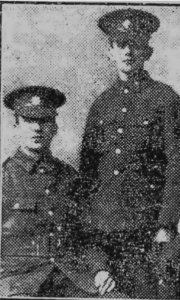
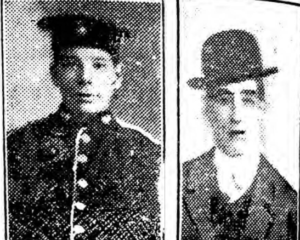
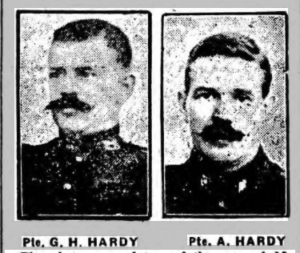
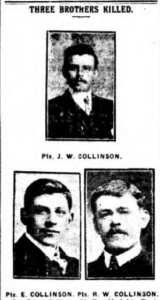
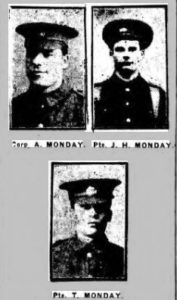
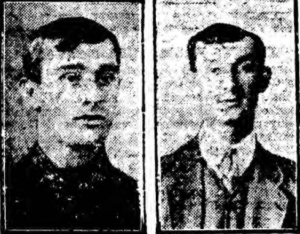
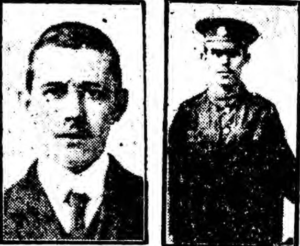
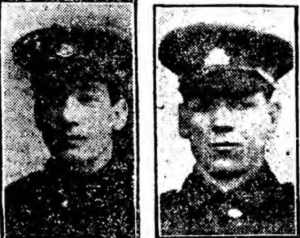
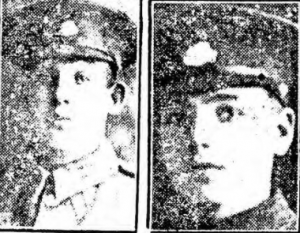
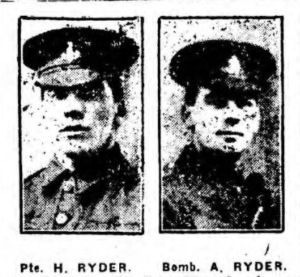
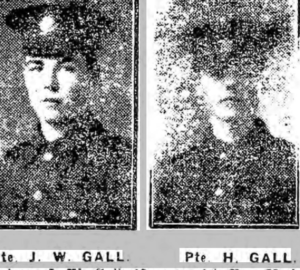
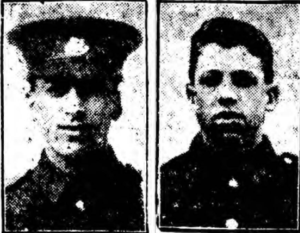
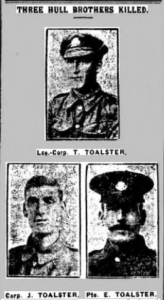
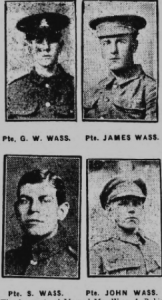
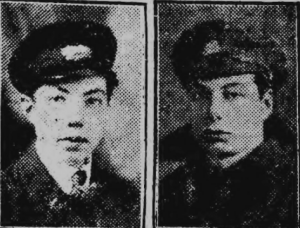

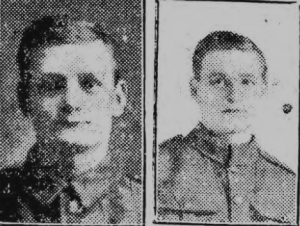
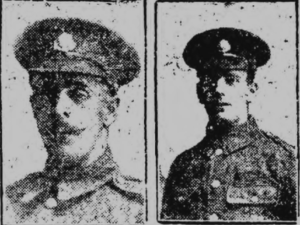
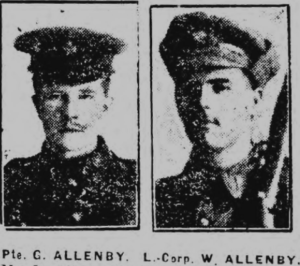
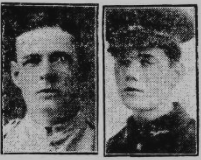
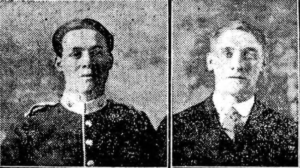
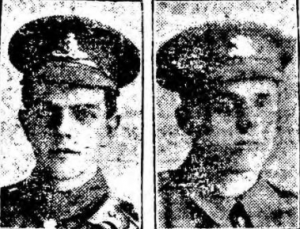
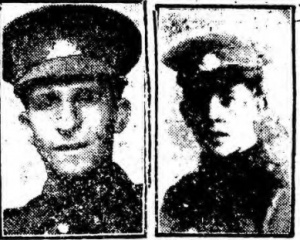
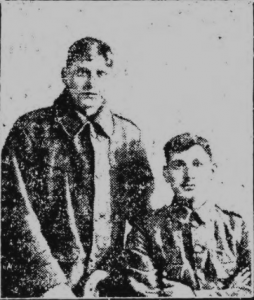
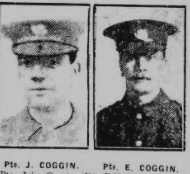
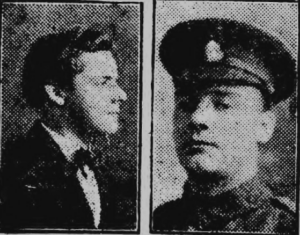
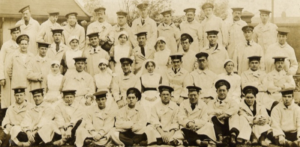
Counting the Dead
The Hull Corporation which was responsible for all war related matters, began to compile Hull’s first casualty figures. It began early on and continued throughout the war. The Council had encouraged many of its staff to enlist (to the detriment of many public services), with promises of protecting their jobs when they returned and topping up wages where applicable. The Council took a keen interest on soldier’s welfare and often reported when they were killed. Relatives of Council staff who had been lost in the war were often mentioned in Council business minutes. Casualty figures were reported periodically in Council meetings throughout the war. The Council was best place to collect this casualty information centrally. Positioned next to the Post Office Headquarters on Alfred Gelder Street, the Guildhall was close to official War Office Telegrams and correspondence. The Council also owed the local Telephone company, the hub of all communications. It was responsible for the Hull City Hall recruitment Office and monitored where soldiers were born and posted. It oversaw Hull four main hospitals and Voluntary Aid Detachment units to monitor the wounded. It controlled Hull’s cemeteries to record all military death and burials. The Council was also the Port Authority and well placed to monitor ship and crew lost at sea. Hull was the also the UK centre for repatriating soldiers and prisoners of war and able to monitor these casualties. The Council had frequent dealings with the local newspapers that published casualty lists. It worked with a collection of individuals and agencies, that were preparing church memorials, street shrines and other rolls of honour. These formal and informal networks enabled the Council to collect, record and cross check casualty details. The Corporation recording processes were sufficient enough, to record by 1919, that “Hull had lost 7,000 men in the war and suffered 14, 000 wounded, of which 7,000 were maimed.”
With the benefit of hindsight, we now know that these casualty figures were considerably higher, but the Council could not have known at the time, about all the Hull born people living outside the city that enlisted in other towns and abroad. Some of these men enlisted under different names and frequently changed regiments to confuse matters. Families also moved around more frequently making it hard to keep track of casualties. The Corporation had the foresight to begin counting casualties when many thought the war would be over “before Christmas” and it maintained its counting throughout the war, during a time of national adversity and crises. The council also did much work to raise war funds and organised the Hull Cenotaph which was paid for by public donations. It supported the erection of many war memorials in churches, work places and support clubs. The Council even created “The Great War Civic Trust” a unique and pioneering charity which helped Hull disabled servicemen and their dependents, long before the welfare state was established in Britain.
Also with hindsight, we now know that local newspapers, under reported grim war news and spread out casualties, over time, to conceal the catastrophe. In the early months of the war, there was a trade in soldier letters back home. Many of these were printed, in full, by local newspapers, often giving a graphic insight into the fighting. They reported death, the effects of shelling, the mud, cold and the deprivations of trench life. These publications became heavily censored after 1915. In order to maintain spirits and social order, newspapers released casualty figures sparingly and usually many months after they happened. Mounting losses were often pushed to the back pages, and mixed up with casualties from other towns, to dilute the impact. War deaths were featured between patriotic tales, good news stories of recovering wounded and the announcement of gallantry awards. These seemed to lighten the mood and soften the blow. However, news from returning soldiers, the sight of discharged wounded servicemen on street corners and the rush of over worked “Telegram Boys”, would constantly remind civilians of the brutality of war. The memoriam section on the back pages of the papers, provide many moving verses and poems to the fallen. These highlight the heart felt pain of bereaved friends, families and relatives. For example, on the first anniversary on the Battle of the Serre, the Hull Daily Mail, printed many sorrowful messages, under the heading, “In Proud and undying Memory of the 13th November 1916” (Hull Daily Mail, 13/11/1917, page 3). The charge for a Memoriam Notice was two Shillings and Six pence, for three lines, and Ninepence, for every additional line of seven words. That said, people filled a page with their sentiments. Even a hundred years later, the reader cannot fail to be touched by these personal expressions of remembrance. The papers also reflect the changing patterns of behaviour, with people marrying across classes, taking on different types of employment and becoming more militant and questioning of authority. Crime increased after the war and became more brutal and organised during the tough economic times ahead.
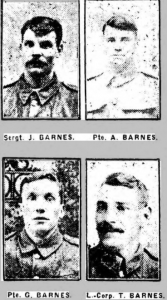
Hull’s four main hospitals and Voluntary Aid Detachment units were constantly busy. Hull was also the main port for repatriated prisoners of war which added to their work load. Hull cemeteries are littered with servicemen that died in Hull far form home. Those with sight impairments were found work at the ‘Blind Institute’ on Beverley Road. Shell shock victims were treated at De La Pole hospital which also had wards for gas wounds. The Brookland’s hospital, on Cottingham Road looked after Officers. The Hull Royal Infirmary which included a Naval Hospital treated 6,500 wounded during the war. The Reckitt’s war hospital cared for some 3,000 patients. The wounded were very visible in the community. They were often amputees, mutilated, or with appalling facial injuries. Many houses with drawn dark curtains, marked a casualty. It seemed that every family had lost someone, or knew someone that had been killed in the war. Civilians wore dark mourning dress, or black arm bands, to indicate that they were morning the loss of a loved one.
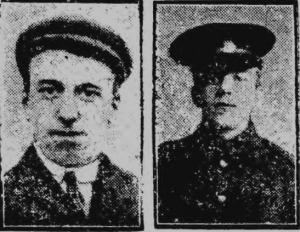
Men physically and mentally broken, or young men who had sacrificed their apprenticeships to go to war, now faced unemployment at home. Rationing of food and basic goods added to the community tension. There were no psychologists or social workers, to treat the victims of shell shock or counsel the large numbers of bereaved. Many families had to cope as best they could.
Newspapers of the time, are full of incidents of violence, drunkenness and anti social behaviour. This reflected the general, poverty, illness and the untreated madness or war casualties. Initial enthusiasm for the war quickly gave way to sadness and shock and a deepening psychological affect on the civilian population. Returning Servicemen had been assured a ‘Land Fit for Heroes’, only to find unemployment, austerity and indifference. Women who lost their husbands in the First World War were granted the first State-funded, non-contributory pension (meaning that they did not have to pay a contribution towards it). They also received a dependent’s allowance for any children under 16. Charities such as “The Soldiers’ and Sailors’ Families Association” and “The British Legion” provided some families with additional support. Hull created it’s own unique Great War Civic Trust to specifically help Hull’s many wounded and bereaved families. Not all women were granted the pension. A woman who married an ex-soldier after he had been discharged from the army would not get a pension if he later died from war wounds. Some women had their pensions withdrawn by the Local Pensions Office if they were judged to be behaving in the wrong way, for instance if they were accused of drunkenness, neglecting their children, living out of wedlock with another man or had an illegitimate child. Thousands of women wrote to the authorities to appeal for a pension. There was fear that if the pension was too generous, then it would mean that women would be discouraged from supporting themselves. ‘Eighteen shillings a week and no husband were heaven to women who, once industrious and poor were now wealthy and idle’ one man wrote to the Daily Express, complaining of the pension.

Even after the war, men continued to die from war wounds, accidents and disease, such as the “Spanish Flu”. Hull cemeteries contain many CWGC graves that show that these deaths continued into the early 1920’s. The Ministry of Pensions records 20,000 war wounded in Hull in 1924, so those who died of wounds as a direct result of the war, may well have continued for decades.
Another ongoing peril was unexploded sea mines which continued to take the lives of Hull fisherman, long after the war had ended. For example, the Hull Trawler, ‘Gitano’, struck a mine on the 23rd December 1918, and was sunk with all hands . The Hull Trawler ’Scotland’, struck a mine on the 13th March 1919, killing seven Hull men. Two days later the steam ship, ‘Durban’ exploded‘, killing another eight Hull sailors. The ‘Isle of Man’ (Hull), exploded on the 14th December 1919, killing a further seven Hull fishermen. The steam ship, ‘Barbados’ exploded on the 5th November 1920, taking ten Hull men. These included the two Weaver brothers killed on the same day. Many of these seaman had survived the war, only to be its victims after.
The scale of casualties and sense of loss, were strongly felt by all those who survived the Great War.
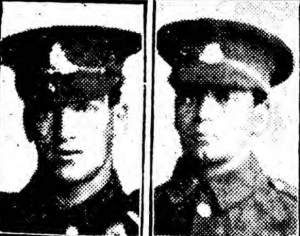
It was reflected in people’s need to erect hundreds of war memorials, particularly as many of those killed, had no known grave. The social trauma of bereavement, would haunt generations for decades, resulting in a large peace movement and reluctance to fight further wars. The numbers of casualties are still difficult to understand. Can you imagine in our modern world of social media, tuning into the evening news, to learn that nearly 60,000 British soldiers had been killed and wounded in a single day? This was the reality on the 1st July 1916, the first day of the Battle of the Somme, a battle which continued for another four months and accounted for 400,000 British casualties!
Every man recorded on the ‘Kingston Upon Hull Memorial’, has their own unique story. Many of these stories are intertwined with the history of Hull. Naming those that died emphasises their existence as individuals and magnifies the enormity of Hull’s loss. The potential of all these men was lost to the world, but they are now remembered together, here, on this website. Rather than reading just a list of names on a war memorial, ww1hull.com allows the reader to interact with all Hull casualties, by adding photographs and stories for each individual, putting faces to name, learning more about Hull during the First World War and adding a context to Hull’s losses.
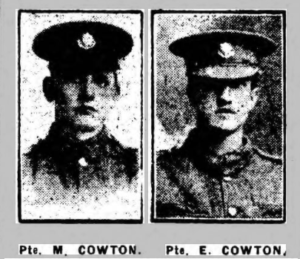
Hi three of my great uncles were killed with in 2 days of each other Spooner Alfred, John, Thomas 1WW
Does any one know were I can trace there Hull History.